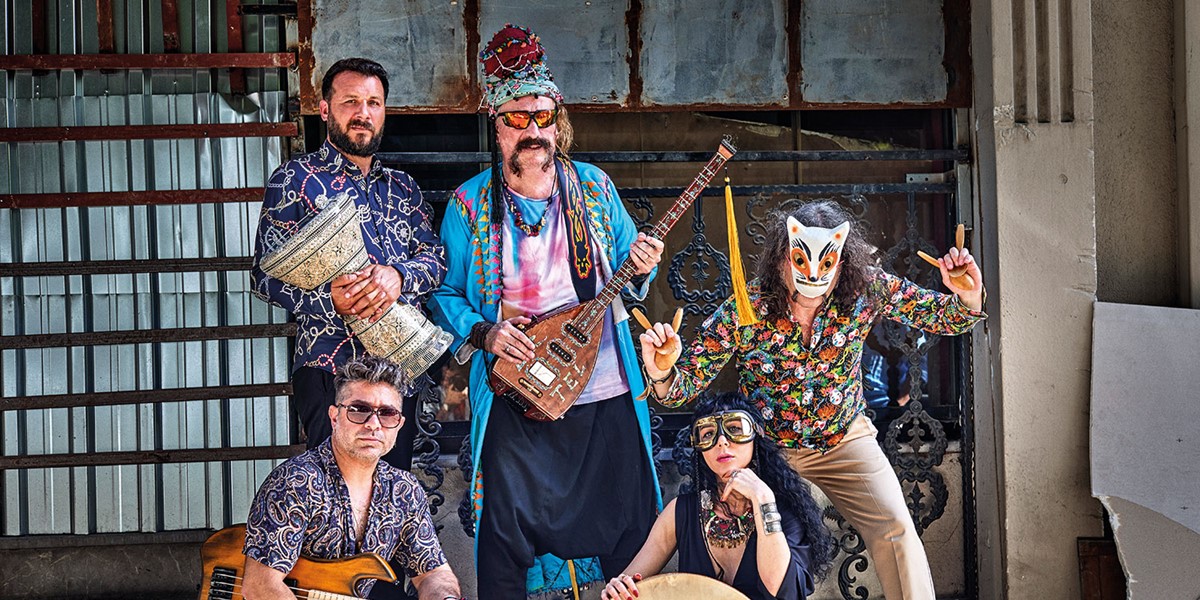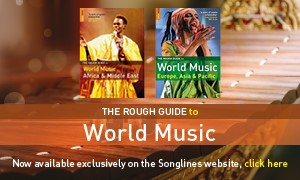Thursday, January 16, 2025
The 4 Corners and Centre of Baba Zula’s Universe
Osman Murat Ertel of Turkish psychedelic ambassadors Baba Zula walks us through his formative records

Can
Tago Mago
(United Artists, 1971)
Before Baba Zula, we had a band called ZeN that focused on collective improvisation. In Spin (US) magazine, they reviewed our album and compared us to Can, so we started listening and became huge fans. We met Can’s drummer, Jaki Liebezeit, by chance in Cologne and told him that we liked his music. This started a lifelong friendship and musical collaboration between him and Baba Zula. He’s a master musician, one of the best drummers in the world, and can play Turkish rhythms inside out. One day, some of us were playing with Liebezeit and he brought us each different Can albums. He gave me Tago Mago, and I’ve loved it since.
Brian Eno & David Byrne
My Life in the Bush of Ghosts
(Sire/Polydor, 1981)
My Life in the Bush of Ghosts was a very influential record for me. I think it’s among the first and best world-fusion albums to use samples. I was heavily influenced by the use of radio and vocal samples. That was a main inspiration for Baba Zula’s incorporation of samples within the live music on our records. Eno and Byrne used samples in an innovative way, using long recordings and making them their own. Many artists use samples of other musicians and get in trouble for it, so we experiment with actually sampling our own music to create new sounds. I had the album with the ‘Qu’ran’ track on it. Later, I learned that version was recalled. I still cannot find the original. It’s still one of the best ‘world music’ albums for me.
Bunalım
Bunalım
(Shadoks/Pharaway Sounds, 2006)
This was the first band I heard live. They rehearsed next door to my childhood home. I listened to them frequently and found out much later in life that they were among Turkey’s first underground rock bands. The group never released a full studio album, but there is this compilation of their singles. They blend an early psychedelic sound with traditional Turkish elements. After their lead guitarist immigrated to Canada, their remaining members continued playing with Erkin Koray. Together, they formed Erkin Koray Yeraltı Dörtlüsü, making some of Koray’s best recordings in my opinion.
Erkin Koray
Elektronik Türküler
(Doğan, 1974)
I love Erkin’s Turkish rock’n’roll attitude. His guitar playing is another story, and you can hear it on this album, especially on the track ‘Cemalim’. When you talk about Turkish rock you have to mention Erkin Koray. He’s a fundamental figure in shaping that sound in the late 60s. Koray was also a main innovator for the electric saz – his recordings are among the first to feature the instrument. Elektronik Türküler features Ahmet Güvenç, the bass player for Barış Manço (another legend), which makes for a great line-up. It has some long songs, which is important to me because I find the standard of three to four-minute songs boring. So, I respect Koray for these long compositions, even as a popular musician. Elektronik Türküler is a great introduction to the music of Erkin Koray.
THE CENTRE
Oscar Vargas & David Espejo y AvilésHazir
Cometa 1973 / Cromo Metrofonia No.1
(Discos Pax, 1973)
I found this album in the cheap record bins in Istanbul in the 90s. It caught my eye because it had two very interesting instruments in a jungle on the cover, so I bought it. Listening, I realised that these instruments were tuned microtonally and each string acted as a different note. Even though the instrumentation is acoustic, it sounds very airy and electronic – it’s like hearing music from space. The whole album is one song divided between the A and B sides. I put it as my musical centre because when I listen to Erkin Koray, I’m transported to my hometown – back in Anatolia or somewhere. If I listen to Brian Eno and David Byrne, I’m in the world. I listen to Can, and I’m in Europe or Germany. But, when I listen to Cometa 1973, I am not in Cuba, I’m not even on Earth, I’m in space. I still go back and listen to it all the time.
INTERVIEW BY nikolas-Kaan yilmaz

